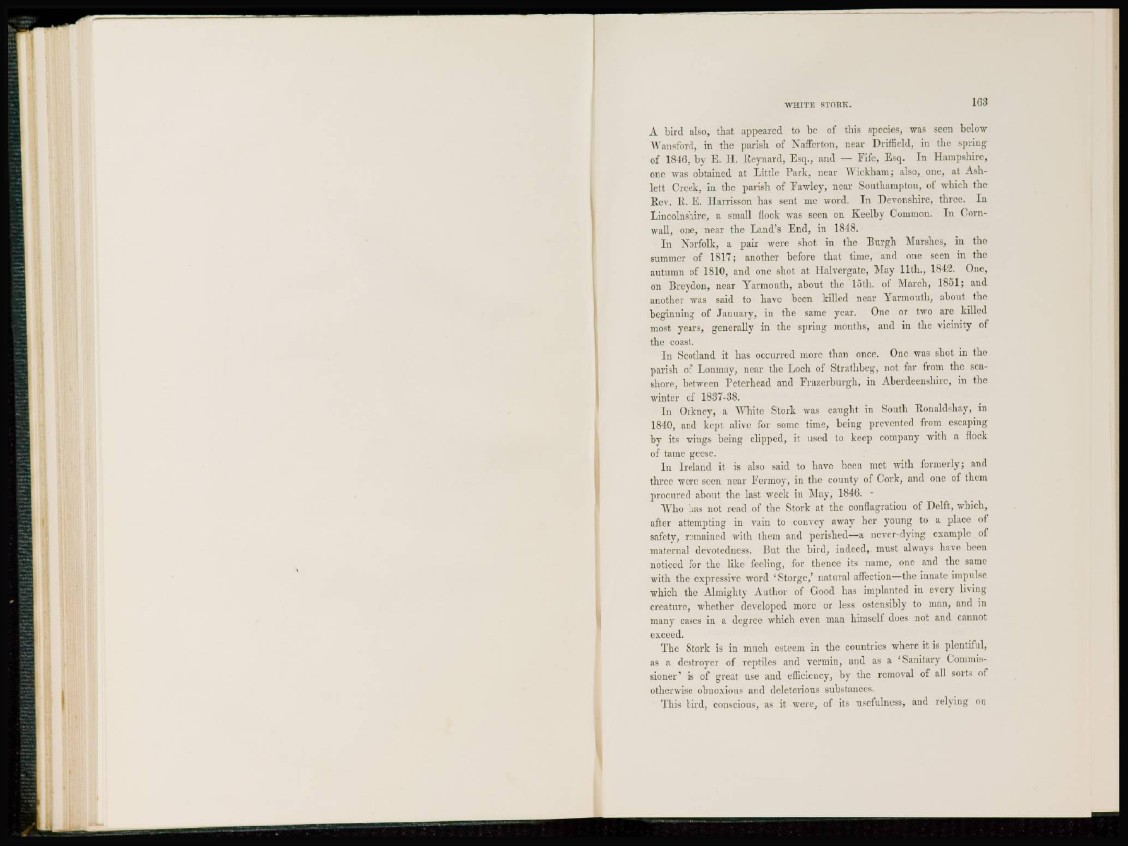
WHITE STORK. 16S
A bird also, that appeared to be of this species, was seen below
Wansford, in the parish of NafFerton, near Driffield, in the spring
of 1810, by E. If. Reynard, Esq., and — Fife, Esq. In Hampshire,
one was obtained at Little Park, near Wickham; also, one, at Ashlett
Creek, in the parish of Fawley, near Southampton, of which the
Rev. R. E. Harrisson has sent me word. In Devonshire, three. In
Lincolnshire, a small flock was seen on Keelby Common. In Cornwall,
one, near the Land's End, in 1848.
I n Norfolk, a pair were shot in the Burgh Marshes, in the
summer of 1817; another before that time, and one seen in the
autumn of 1810, and one shot at Halvergate, May 11th., 1842. One,
on Brcydon, near Yarmouth, about the 15th. of March, 1851; and
another was said to have been killed near Yarmouth, about the
beginning of January, in the same year. One or two are killed
most years, generally in the spring months, and in the vicinity of
the coast.
I n Scotland it has occurred more than once. One was shot in the
parish of Lonmay, near the Loch of Strathbcg, not far from the seashore,
between Peterhead and Fraserburgh, in Aberdeenshire, in the
winter of 1837-38.
In Orkney, a White Stork was caught in South Ronaldshay, in
1840, and kept alive for some time, being prevented from escaping
by its wings being clipped, it used to keep company with a flock
of tame gecsc.
In Ireland it is also said to have been met with formerly; and
three were seen near Fermoy, in the county of Cork, and one of them
procured about the last week in May, 1846. -
Who has not read of the Stork at the conflagration of Delft, which,
after attempting in vain to convey away her young to a place of
safety, remained with them and perished—a never-dying example of
maternal devotedness. But the bird, indeed, must always have been
noticed for the like feeling, for thence its name, one and the same
with the expressive word 'Ston>c,' natural affection—the innate impulse
which the Almighty Author of Good has implanted in every living
creature, whether developed more or less ostensibly to man, and in
many cases in a degree which even man himself does not and cannot
exceed.
The Stork is in much esteem in the countries where it is plentiful,
as a destroyer of reptiles and vermin, and as a 'Sanitary Commissioner
' is of great use and efficiency, by the removal of all sorts of
otherwise obnoxious and deleterious substances.
This bird, conscious, as it were, of its usefulness, and relying on